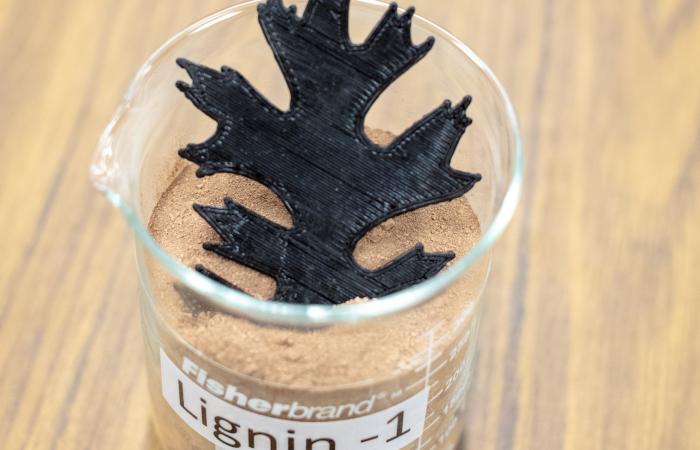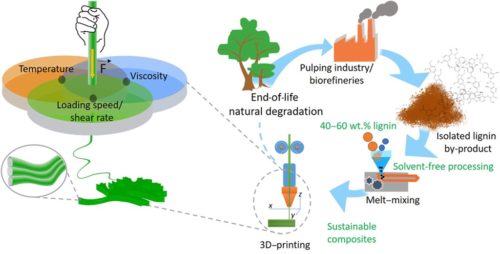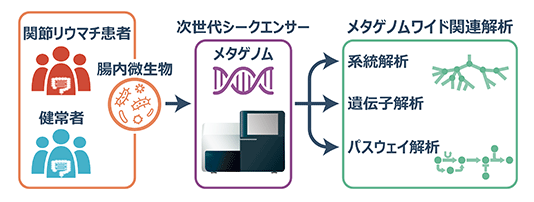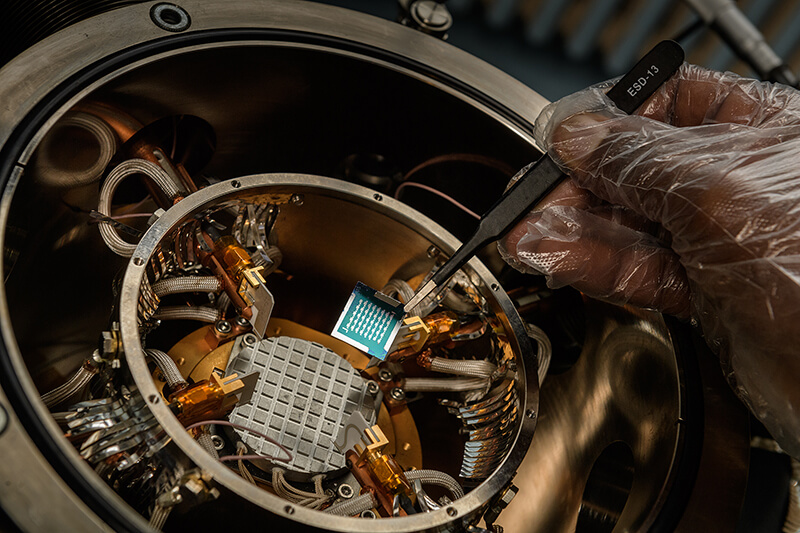(New composite advances lignin as a renewable 3D printing material)
2018/12/18アメリカ合衆国オークリッジ国立研究所 (ORNL)


・ ORNL が、バイオマスのプロセス後に残るリグニンを利用して 3D プリンティングインクを作製する技術を開発。
・ リグニンのこのような新しい利用方法により、バイオリファイナリープロセス全体の経済性の向上が期待できる。
・ リグニンに低温融解のナイロンとカーボンファイバーを組合せた新複合材料は、3D プリンティングプロセスでの押出しと積層間の溶着強度に適した特性に加え、優れた機械特性を有する。
・ リグニンは、石油ベースの熱可塑性樹脂製の ABS 等とは異なり炭化しやすいため、軟化させて 3D プリンタノズルから押出すために加熱できるのは特定の温度のみ。過熱すると大幅に粘性が低下してノズルからの押出しが困難になる。
・ リグニンとナイロンを組合せた同複合材料では、室温下での硬度が増加して融解粘度が低減することを発見。同材料はナイロンと同等の引張強度と、ABS 樹脂やポリスチレンを下回る粘性を提供する。
・ 中性子散乱や高度顕微鏡により同複合材料の分子構造を調査した結果、リグニンとナイロンの組合せによる潤滑効果や可塑化効果の可能性が観られた。
・ リグニンベースのプリンティング材料開発では初めての試みとなる、リグニンを 40~50%増量した複合材料も作製。これにカーボンファイバーを 4~16%添加した新複合材料は容易に加熱でき、より高速なプリンティングに対応して迅速に流れるより強力な最終製品ができる。
・ 同複合材料について特許出願中。現在、同材料の改良と他のプロセス方法の可能性を探求している。
URL: https://www.ornl.gov/news/new-composite-advances-lignin-renewable-3d-printing-material
(関連情報)
Science Advances 掲載論文(フルテキスト)
A path for lignin valorization via additive manufacturing of high-performance sustainable composites with enhanced 3D printability
URL: http://advances.sciencemag.org/content/4/12/eaat4967
Abstract
We report the manufacture of printable, sustainable polymer systems to address global challenges associated with high-volume utilization of lignin, an industrial waste from biomass feedstock. By analyzing a common three-dimensional printing process—fused-deposition modeling—and correlating the printing-process features to properties of materials such as acrylonitrile-butadiene-styrene (ABS) and nylon, we devised a first-of-its-kind, high-performance class of printable renewable composites containing 40 to 60 weight % (wt %) lignin. An ABS analog made by integrating lignin into nitrile-butadiene rubber needs the presence of a styrenic polymer to avoid filament buckling during printing. However, lignin-modified nylon composites containing 40 to 60 wt % sinapyl alcohol–rich, melt-stable lignin exhibit enhanced stiffness and tensile strength at room temperature, while—unexpectedly—demonstrating a reduced viscosity in the melt. Further, incorporation of 4 to 16 wt % discontinuous carbon fibers enhances mechanical stiffness and printing speed, as the thermal conductivity of the carbon fibers facilitates heat transfer and thinning of the melt. We found that the presence of lignin and carbon fibers retards nylon crystallization, leading to low-melting imperfect crystals that allow good printability at lower temperatures without lignin degradation.


